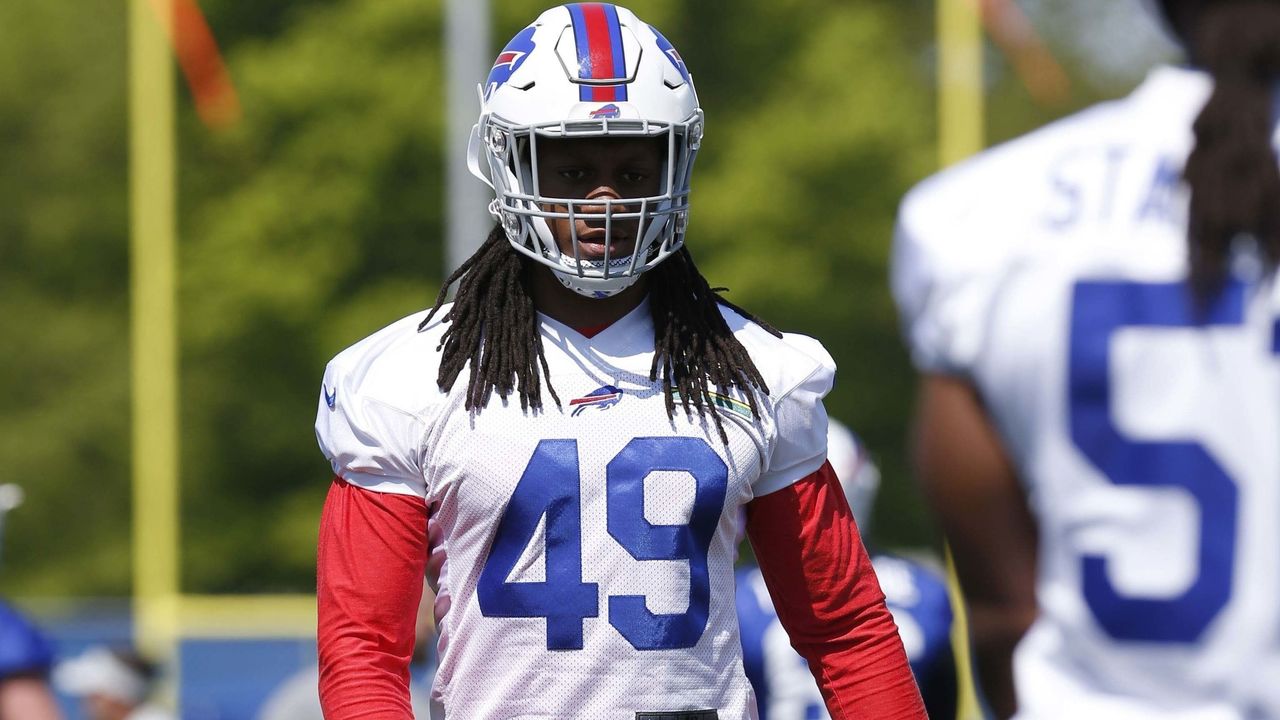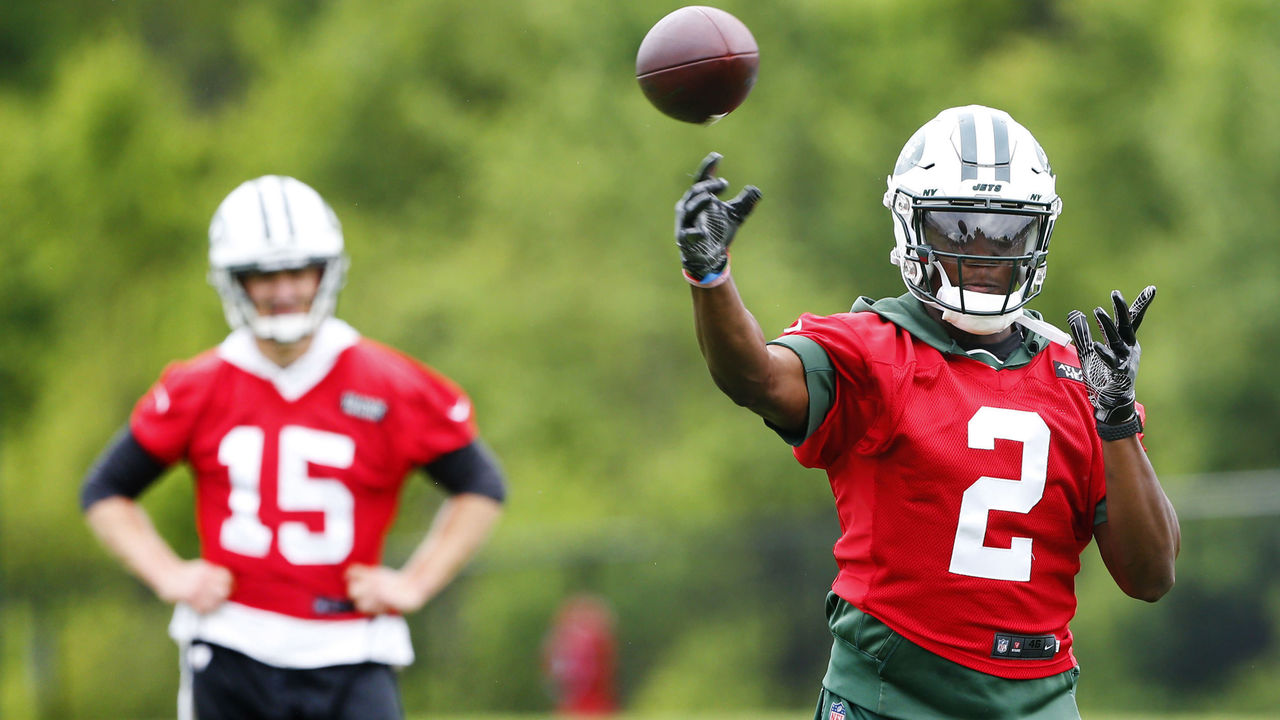Best and worst offseason moves by every team: AFC edition
As eyes turn to training camp, every NFL team is feeling like it nailed its offseason decisions.
But, as the regular season and playoffs always illuminate, for every savvy, well-reasoned move, there's a colossal error.
Here, we break down each AFC team's crowning achievement and biggest misstep this offseason, starting with the AFC East.
AFC
EAST | NORTH | SOUTH | WEST
NFC
EAST | NORTH | SOUTH | WEST
Buffalo Bills
Best: Going all-in on Tremaine Edmunds

The Bills made two bold moves in this year's draft, and while we'll get to the headlining trade-up in a moment, Buffalo gets huge credit for not letting the uber-athletic Tremaine Edmunds get past them.
The 6-foot-5, 253-pound Edmunds is a freak at the linebacker position. His unreal size and speed should make him a force at the NFL level, and the 20-year-old has only scratched the surface of his potential. The do-it-all 'backer could be the leader of the Bills' defense for the next decade.
Worst: Going all-in on Josh Allen
Josh Allen is supremely physically talented, and clearly wowed the Bills with his character and leadership qualities, but he's far from ready to carry the weight of the franchise on his shoulders. He needs to dramatically improve his accuracy and reading of defenses to succeed at the NFL level, which takes time.
Josh Rosen is far more prepared to start straight away due to his advanced footwork and pocket presence, and his ability to consistently throw under pressure and with anticipation - especially considering the poor talent on the Bills' offense. His ceiling is just as high as Allen's, too.
Miami Dolphins
Best: Deciding not to pay Jarvis Landry

Jarvis Landry is a good receiver, but his numbers - and therefore his reputation - have always surpassed his talent. The Dolphins obviously shared this opinion, as they decided the pass-catcher wasn't worth the elite money he was demanding and traded him to the Cleveland Browns.
While the returns were underwhelming (a 2018 fourth-rounder and 2019 seventh-rounder), Miami was smart to avoid tying itself to a mammoth contract for a player who isn't a true game-changer, as shown by his 8.8 yards per reception in 2017.
Worst: Trading for Robert Quinn
The Dolphins jettisoned a host of veteran talents, highlighted by Landry and Ndamukong Suh, due to their overpriced contracts and/or uncertain production moving forward.
So why, Miami, did you trade a fourth-rounder for a declining player in Robert Quinn, who's had injuries rob him of the form that propelled him to 19 sacks in 2013? Quinn did bounce back somewhat with an eight-sack year in 2017, but will count for nearly $11.5 million toward the cap in 2018 and nearly $13 million in 2019 - far beyond what he'll be worth when 2017 first-rounder Charles Harris hopefully takes the starting job.
New England Patriots
Best: Getting a first-round pick back for Brandin Cooks

Brandin Cooks certainly wasn't poor, or even average, in his one-year stint with the Patriots. In fact, he was arguably the team's most reliable weapon behind Rob Gronkowski, and without the injury concerns.
But while Cooks was good, he never took his game to the elite level needed to prove he was worth the first-rounder the Patriots traded for him, as well as the Sammy Watkins-level contract he would likely demand next offseason.
The always forward-thinking Patriots come out ahead, of course, as Los Angeles' first-rounder is higher than the one New England originally gave up to acquire Cooks.
Worst: Passing on Harold Landry for Sony Michel at No. 31
As usual with the savvy Patriots, we're left to nitpick their offseason decisions. Sony Michel is going to be a nightmare in a Tom Brady-led offense, and is in position to be a star. His selection, though, is a head-scratcher considering the Patriots rarely place a premium on the running back position - not since they took Laurence Maroney in the first round of the 2006 draft and he went on to rush for just 2,500 yards in four seasons before being cut.
Maybe New England had concerns about Landry's injury history, but come the postseason, what will the front-seven-weak Patriots be wishing they had more of: weapons for the already dominant offense or young pass-rushers who can help close out games for Tom Brady?
New York Jets
Best: Creating competition at QB and securing the future

After years of being a quarterback purgatory, the New York Jets must get credit for following the Super Bowl champion Philadelphia Eagles' model - namely, you can't overspend, or take more shots on, fixing the quarterback position.
Josh McCown can keep the Jets respectable and is the perfect mentor for the raw Sam Darnold. Teddy Bridgewater is a low-risk, high-reward option who could turn himself into a valuable trade piece if he steals the starting job, which wouldn't be that crazy considering his rave reviews out of OTAs. And finally, Darnold has arguably the highest ceiling of any rookie quarterback thanks to his football IQ, mobility, and arm strength, and should greatly benefit from not being under pressure to start Week 1.
Worst: Overpaying Trumaine Johnson
New York was flush with cap space entering free agency, and put it to immediate use, securing twice-franchise-tagged Los Angeles Rams cornerback Trumaine Johnson on a massive five-year, $72.5-million contract.
Johnson is now the second-highest-paid cornerback in the league despite never making an All-Pro team or even the Pro Bowl. The physical corner should fit well into Todd Bowles' scheme, but was almost the definition of average in 2017, ranking 68th among 121 qualifying corners, according to Pro Football Focus. With the Jets a few years away from contending for a playoff spot consistently, Johnson will struggle to live up to his deal.
AFC
EAST | NORTH | SOUTH | WEST
NFC
EAST | NORTH | SOUTH | WEST
(Photos courtesy: Action Images)
HEADLINES
- Bears exploring potential stadium sites in Northwest Indiana
- TNF bets: Seahawks host Rams for high-stakes NFC West clash
- Burrow leaves future with Bengals murky: 'Crazy things happen'
- Rookie Ward hopes to be involved in Titans' coaching search
- Nacua believes officials make calls to get on TV: 'Refs are the worst'